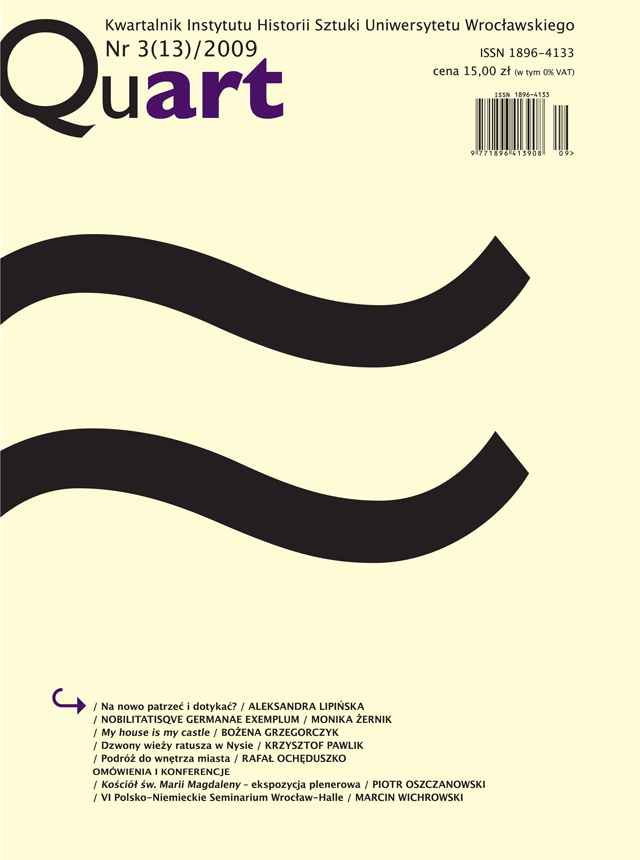Na nowo patrzeć i dotykać? Znaczenie tradycyjnych materiałów w plastyce współczesnej na przykładzie użycia alabastru w XX i XXI w. (cz. I)
Looking and Touching Anew? The Importance of Traditional Materials in Contemporary Art as Exemplified by the Use of Alabaster in the 20th and 21st Centuries (Part I)
Author(s): Aleksandra LipińskaSubject(s): Fine Arts / Performing Arts, History of Art
Published by: Wydawnictwo Uniwersytetu Wrocławskiego
Summary/Abstract: The paper discusses the issue of artistic attitudes towards traditional materials in the era of crucial changes the sculpture medium has witnessed from the beginning of the 20th century. This problem is presented on the example of alabaster: material, which has been artistically used since antiquity. Its natural properties, as well as its relationship with other important materials (e. g. marble), became a starting point for the creation of certain cultural notions and symbolic associations attached to alabaster in the course of time.The question: if and how alabaster functions in modern sculpture arose from the long-term occupation of the author with the early modern alabaster sculpture and its symbolics. In the first part of the paper the summary of this research has been presented: next to sculptural properties (relative softness, translucency) and short overview of the typical genres where alabaster was applied (small-scale sculpture, relief, tomb sculpture, vessels, lamps), the main currents of opinion surrounding the material have been summarized (alabaster as a symbol of chastity, evangelical symbol of the human body of Christ, attribute of female body).From this perspective selected examples of the alabaster usage by important figures of modern sculpture have been discussed. The first part of the essay concerns the development in the 1st half of the 20th century, when alabaster found appreciation among the followers of the direct carving movement. The alabaster works of Henri Gaudier-Brzeska, Henry Moore, Barbara Hepworth, John Skeaping and Jacob Epstein have been analysed in order to find out how these ‘progressive’ sculptors dealt with the material, which - especially in Great Britain - was loaded with tradition. The discussed examples show a wide range of attitudes: from the dialogue with traditional meanings (translucency and reaction on light as the sign of transcendence) to the exploration of entirely new potentials (alabaster as primal matter loaded with natural power of rocks and atavistic instincts).In the next issue of Quart the development in the 2nd half of the 20th and the beginning of the 21st century will be presented.
Journal: Quart
- Issue Year: 13/2009
- Issue No: 3
- Page Range: 3-18
- Page Count: 16
- Language: Polish

